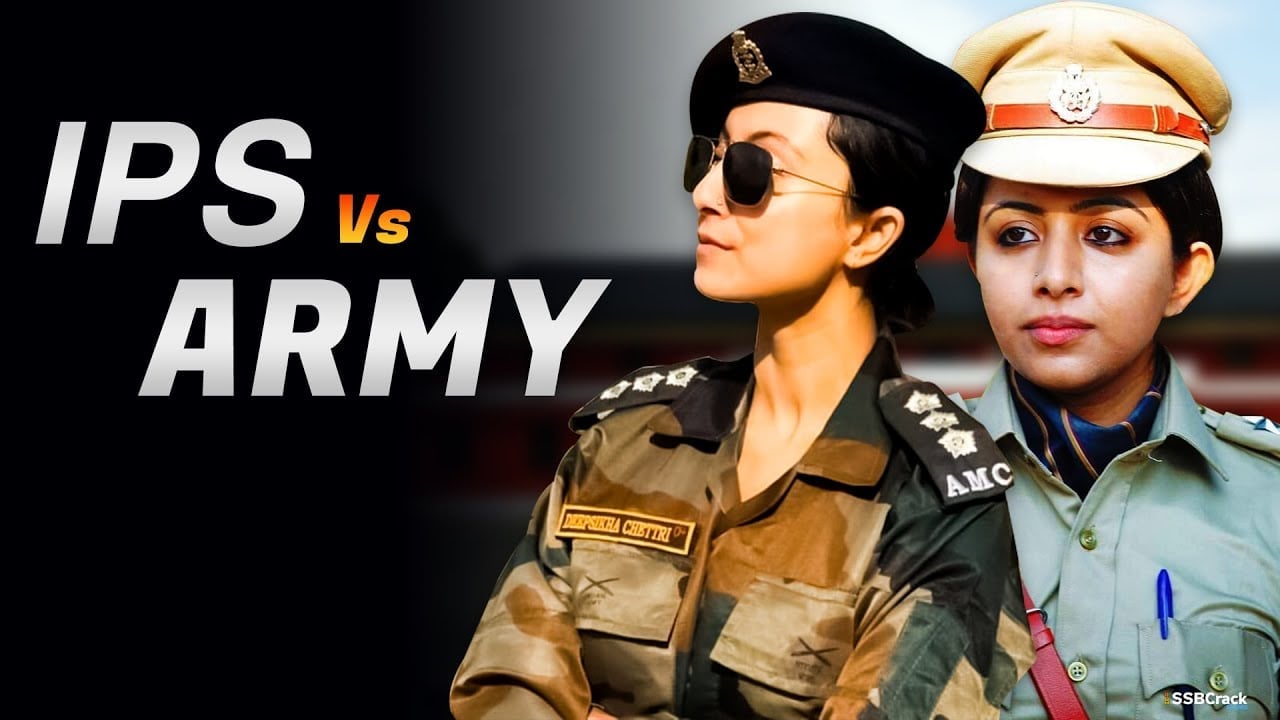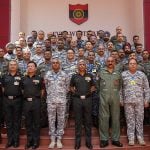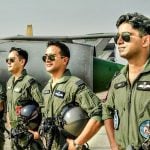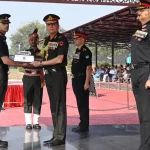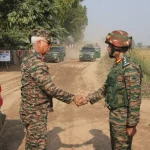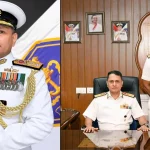In India, the question of who wields more power—the Indian Police Service (IPS) or Army officers—is intricate and multifaceted. Each group possesses its own realms of authority, showcasing power in different ways that are paramount to the country’s security and governance. While it may seem at first glance that there might be a straightforward hierarchy between these two essential entities, the reality is a complex interplay of operational capacity, administrative influence, and social respect. This article seeks to unpack these nuances, providing a comprehensive analysis of the roles, responsibilities, and power dynamics between IPS officers and Army officers in India.
Historical Context
To understand the power dynamics between IPS and Army officers today, it’s crucial to discuss their historical development. The Indian Armed Forces are rooted in colonial legacy, evolving from the British Indian Army, which has a long-standing tradition of military tactics and national defense strategies. Organized to deal primarily with external threats, the primary role of the Army has always been to protect sovereignty and territorial integrity.
Conversely, the Indian Police Force has its origins linked to the need for law enforcement and social order, evolving in response to both public needs and political pressures. The IPS was established in 1948, soon after India gained independence, to create a cohesive police structure free from colonial influences. While the two services emerged during distinctly different historical contexts, their evolution has increasingly seen overlaps, especially in the realms of internal security, counter-terrorism, and civil unrest management—regions where both the IPS and Army officers must collaborate.
Operational Power
Operational power is one of the most significant distinctions between IPS and Army officers.
Army Officers: Commanders in Defence
Army officers command significant operational power when it comes to national defense. They lead troops in military operations and are charged with making high-stakes decisions that directly affect national security, especially during conflicts, wars, or border tensions. For example, during the 2016 Uri Attack and subsequent surgical strikes, the Army’s strategic acumen was on full display, as military generals orchestrated operations that underscored India’s stance on cross-border terrorism.
IPS Officers: Guardians of the Internal Order
In contrast, IPS officers wield their operational influence in maintaining law and order within the country. Their responsibility spans crime investigation, crowd control, and civil unrest management. When faced with situations of internal threat or emergencies, such as the riots in Delhi in February 2020 or the critical policing during the COVID-19 lockdown, IPS officers are at the forefront, leading police forces to ensure public safety.
Both services, thus, are paramount for the sovereignty of the nation, albeit their operational focuses differ. While Army officers may command in theatre during external conflicts, IPS officers ensure an orderly internal environment, often collaborating, especially in counter-insurgency situations.
Administrative Power
Shifting from operational roles, administrative power presents another critical avenue where comparison is essential.
IPS Officers: Bureaucratic Architects
IPS officers enjoy substantial bureaucratic authority within civil governance structures. They manage various law enforcement agencies, control resources, and make strategic decisions impacting law enforcement policies. Their powers are entrenched in the daily lives of civilians—whether enforcing traffic laws, managing municipal policing, or addressing urban crime nuances. Their role is administrative as much as it is operational, commanding respect within the civil service ranks. The bureaucratic framework allows them to interact closely with political authorities, making their influence pervasive.
Army Officers: Limited Civil Administrative Scope
Conversely, Army officers have comparatively limited administrative authority. Their roles are primarily associated with military logistics, personnel management, and military training. While they may influence national defense policies indirectly through strategic planning, their ability to affect civilian governance structures is minimal. This delineation emphasizes the stronger administrative grip that IPS officers secure, allowing them to affect broader policy areas directly impacting the civilian populace.
Rank Equivalence and Pay Scales
A quantitative aspect of this power dynamic can be gleaned through rank equivalences and pay scales.
- Rank Equivalence:
- Senior IPS officers, such as the Director General of Police (DGP), have a rank equivalent to Lieutenant General in the Army.
- Junior ranks exemplify varying equivalences, where a Superintendent of Police is similar to an Army Major or Lieutenant Colonel.
- Salary Considerations:
- The 7th Pay Commission places salaries as follows: a DGP can earn up to ₹2,25,000 per month, while an Army officer in general rank can also approach or exceed similar figures, especially with allowances factored in.
Influence and Respect
Both groups command respect in society, but the context of their influence differs markedly.
Army Officers: National Defenders
Army officers are viewed as the ultimate authority figure when it comes to national sovereignty and military operations. The social respect commanded by Army officers is significant; they represent defense against external threats, advocating values of bravery, commitment, and sacrifice. Public ceremonies often highlight their contributions, reinforcing their heroic image.
IPS Officers: Civil Governance Champions
IPS officers, conversely, often hold substantial bureaucratic and social influence within the civilian governance framework. Their position allows them to affect significant political decisions and interact closely with local governments, which can lead to powerful ties with political leaders. They often find themselves at the intersection of law enforcement and governance, dealing with internal crises that affect the daily lives of citizens.
In real-world situations, both officers work together—like during the 2008 Mumbai terror attacks, where police command led by IPS officers demonstrated an essential cooperative action with the Army to mitigate a severe crisis. Likewise, during natural disasters, such as the 2015 Nepal earthquake, Army officers played crucial roles in search and rescue operations, highlighting their operational synergies.
Order of Precedence
Examining the order of precedence established by the Government of India provides further insights into power dynamics between these two services. While Army generals are accorded high rank within this order, top civil administrative leaders, such as the Cabinet Secretary, hold precedence over them. This signifies a broader governance scope for civil administrative services, including the IPS, aligning with positions of substantial authority within the nation’s governance apparatus.
Comparative Analysis
When comparing IPS and Army officers, the distinction between operational power, administrative influence, and social respect becomes more pronounced.
- Operational Domain:
- IPS Officers: Focus solely on domestic events, law enforcement, and civil emergencies.
- Army Officers: Command operations in theatres of war, focusing on national defence.
- Administrative Capacity:
- IPS Officers: Hold essential bureaucratic roles, influencing law and order and public safety policies.
- Army Officers: Work within military structures with limited impact on civil administration.
- Public Perception:
- IPS Officers: Viewed as public safety enforcers and civil governance champions, close to political powers.
- Army Officers: Revered as protectors of national integrity and freedom, often celebrated during national events.
Challenges and Solutions
Both IPS and Army officers face distinct challenges that can limit their effectiveness.
Challenges for IPS Officers:
- Corruption and Political Pressure: IPS officers may struggle against corruption and political maneuvering that could hinder law enforcement.
- Public Scrutiny and Safety: The everyday scrutiny they face, especially in volatile situations, places them at risk both personally and professionally.
Challenges for Army Officers:
- Resource Allocation: Given limited budgets, logistical issues often hamper operational efficiency.
- Civil-Military Relations: Navigating the delicate balance between military intervention and civilian governance can create friction.
Potential Solutions:
- Holistic Training: Enhanced training programs focusing on inter-agency collaboration can better prepare both services to handle crises effectively.
- Policy Reforms: Establishing clearer guidelines and accountability measures can combat internal corruption and lead to more consistent law enforcement outcomes.
Future Trends and Predictions
As India continues to develop economically and socially, the roles of IPS and Army officers may evolve.
- Inter-Agency Collaboration: The growing complexity of national security threats demands enhanced collaboration between these two forces. Future strategies may necessitate joint training exercises and collaborative missions.
- Digital Transformation: Both services must adapt to technological advancements. Cybersecurity, modern policing techniques, and digitally-augmented operations will redefine traditional roles.
- Civil-Military Integration: A greater demand for civil-military partnerships to manage an array of socio-political issues could define future operational standards and practices for both IPS and Army personnel.
Conclusion
The question of who holds more power in India between IPS and Army officers cannot be answered definitively; rather, their strengths lie in complementary realms. Army officers dominate military commands and external defense strategies, while IPS officers exert extensive influence over internal governance and law enforcement.
In concluding this exploration, it is essential to recognize that both groups are indispensable to India’s stability and sovereignty. The challenges they face and the perspectives they represent speak volumes about the complex nature of governance and security in a diverse democracy. Moving forward, collaboration and mutual respect between the IPS and Army will play a pivotal role in safeguarding the nation against an array of contemporary threats. Thus, neither IPS officers nor Army officers can singularly claim superiority in power; together, they embody the ideals of service and patriotism that fortify India’s fortitude and resilience.

